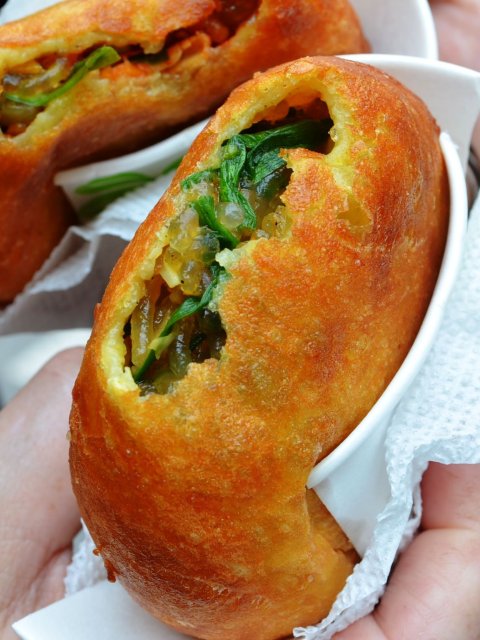Finding the real Korea
When travelling in a foreign country you probably want to experience the real thing, get a feeling for the local people and their life, what they really eat and how they live, how they entertain themselves, how they interact. But more often than not, as a visitor to the country you are relegated to tourist status. You may only see the things recommended by a thousand tourists before you through the medium of a lonely planet book or a TripAdvisor review.

In a place like Korea, if you can’t speak or read the language, your knowledge of where to go and what to eat are set by guidebooks, or online blogs. You may get a good tip on a more genuine place to visit or restaurant to eat in, but converting that to reality is difficult. Finding your way around a busy Seoul neighbourhood with no language cues to help can be tricky. If you can’t read Korean then chances are you won’t even know that there is a restaurant tucked on the 4th floor of a building that looks like an office block. Compounded by the fact that, amazing as the subway system is, it can’t take you to the myriad of family run restaurants that are out in the hills or in the countryside or down little side roads off the expressway. These are the kinds of restaurants that serve just 1 or 2 different dishes of the local speciality. Somewhere that a Korean family will drive 40 minutes to, to eat that dish. You need local knowledge but also local language and an amazing sense of direction (or a good gps) to find the real Korea.


If you are lucky enough to be staying with Korean people your chances of experiencing these are more likely, but not guaranteed. The tendency is for your host to want you to “see” the best of Korea. Their responsibility is to do their best to introduce you to what they think you will want to see as a tourist. That usually means going to a palace, or a handicraft village, a trip to MeongDong neighbourhood in Seoul for shopping- where you may as well be in any big city in the world with the same brand shops, (or knockoff of international brand shops), or to Insadong to see the line of sellers peddling Korean “handicraft” for tourists, or namdaemun to hustle with the middle-age ladies buying cheap Chinese or Russian made clothes and kitchen gear. None of which a Korean would spend their regular time doing.

Or you may be lucky enough, like us to have a Korean friend who can be talked out of playing google tour guide with you and instead just take you along with them and their kids on a Sunday outing. This one was arranged by the wife who read about it online through her women’s group gossip forum. A trip an hour and half out of Seoul into a farming area in the hills led us to a place with only about 10 houses and a church leading up a valley totally filled with vegetable farms and the odd cow in a stable.
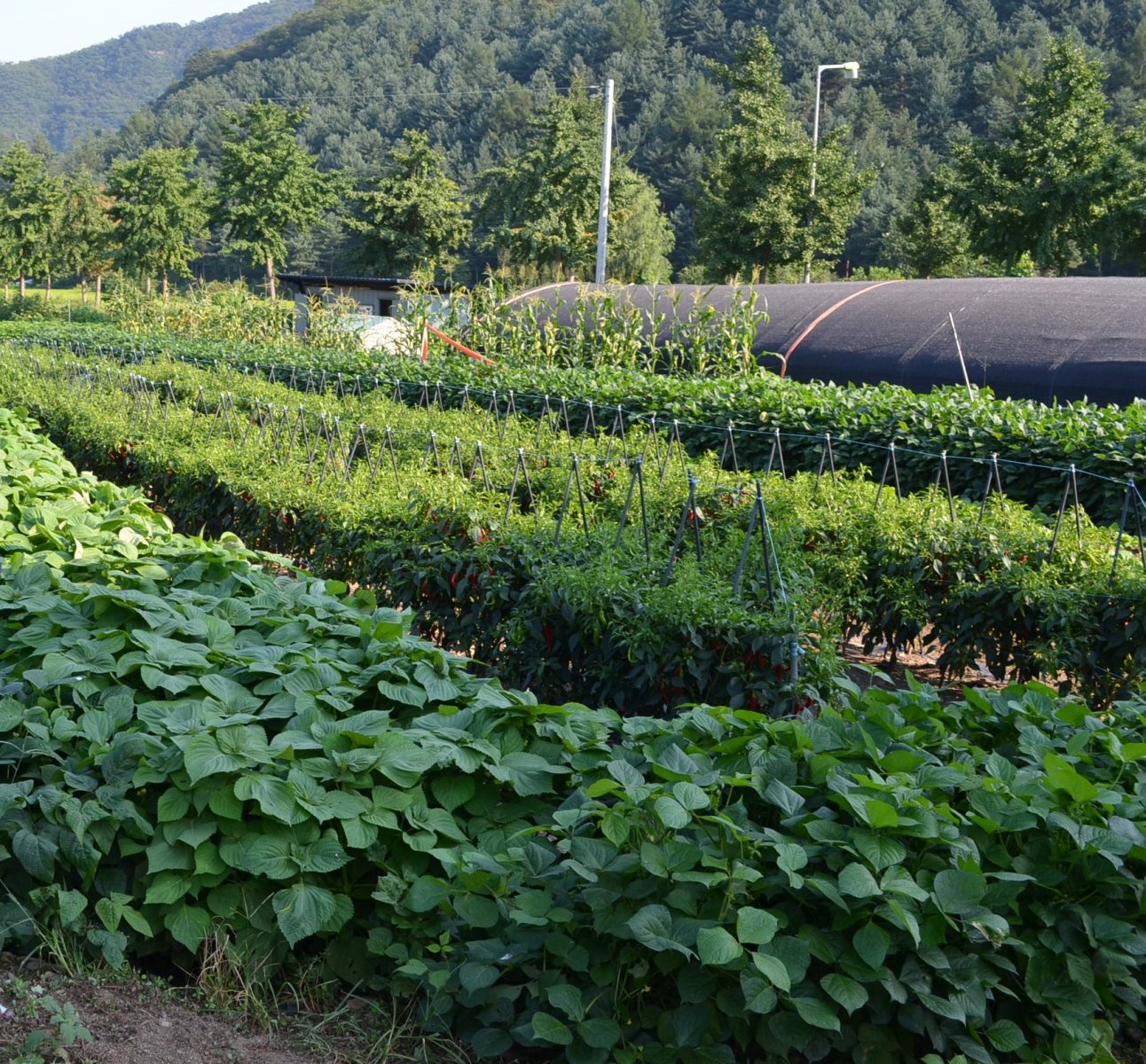
This local community was having a late season firefly festival. Some of the crops they grow there attracts fireflies for a short season in summer. The small group of locals put on a 3-day event basically in an empty field in the hope that people from Seoul would come, charging a family of 4 the equivalent of NZ$80 to come for the day. It seems that times are tough for rural horticultural communities. And they are having to be creative with their income-earning ideas. There were activities for the kids to do while the parents spread out their mats under a shade cloth in the middle of the dusty area. The smell of poo from the neighbouring cows wasn’t a deterrent as the 30 or so kids ran about from one activity table to another. This included pounding sticky rice with a huge wooden mallet to make dok, a sticky rice cake eaten covered in bean flour. It takes a lot of hitting with the mallet for the cake to form. Luckily the city kids are all eager to have a go.
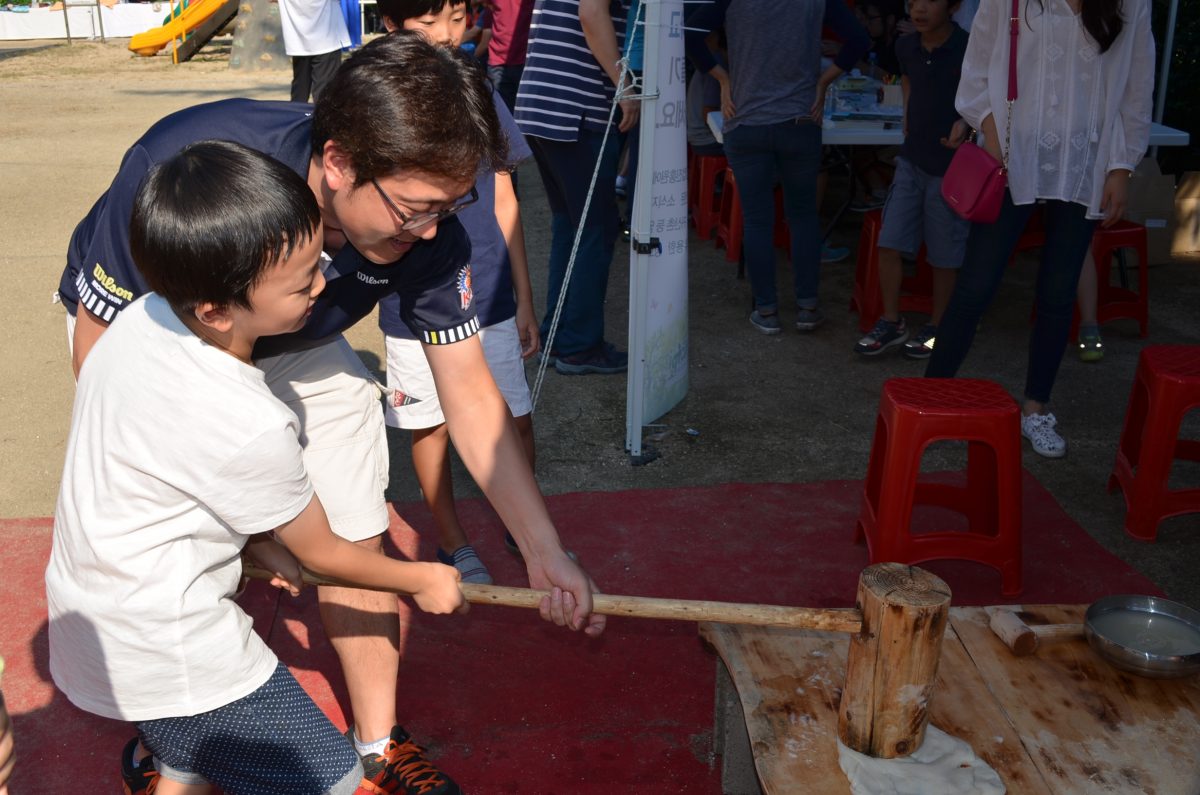

Turning strands of straw into whimsical shapes like snails also seemed popular. But this was all forgotten as soon as a competitive game was announced. Competitions in quoits, stick throwing and hacky sack were divided into girls matches and then boys matches. But the real excitement happened when the mums were called up to compete, and then the dads. Korean people seem to like to join in any activity going and aren’t held back by inhibition or fear of failure in public. A mum getting 12 bounces of the hacky sack off her foot received rapturous applause, but there was not a lot less enthusiasm for the mum who missed it completely. Prizes were handed out for every round with the winner receiving a bag of local rice or local green vegetables. As the only foreigners who had come to this community and this event we were given a bag of rice each for just being there.
Dinner was served by the local ladies under a side tent. They had been preparing all day to serve up a bowl of bibimpap and a bowl of soup per person. The bibimpap had a base of the local rice and was topped with about 6 different ingredients, again including locally made kimchi and vegetable dishes. The potato, tofu and fermented bean paste soup was also made to showcase local ingredients.
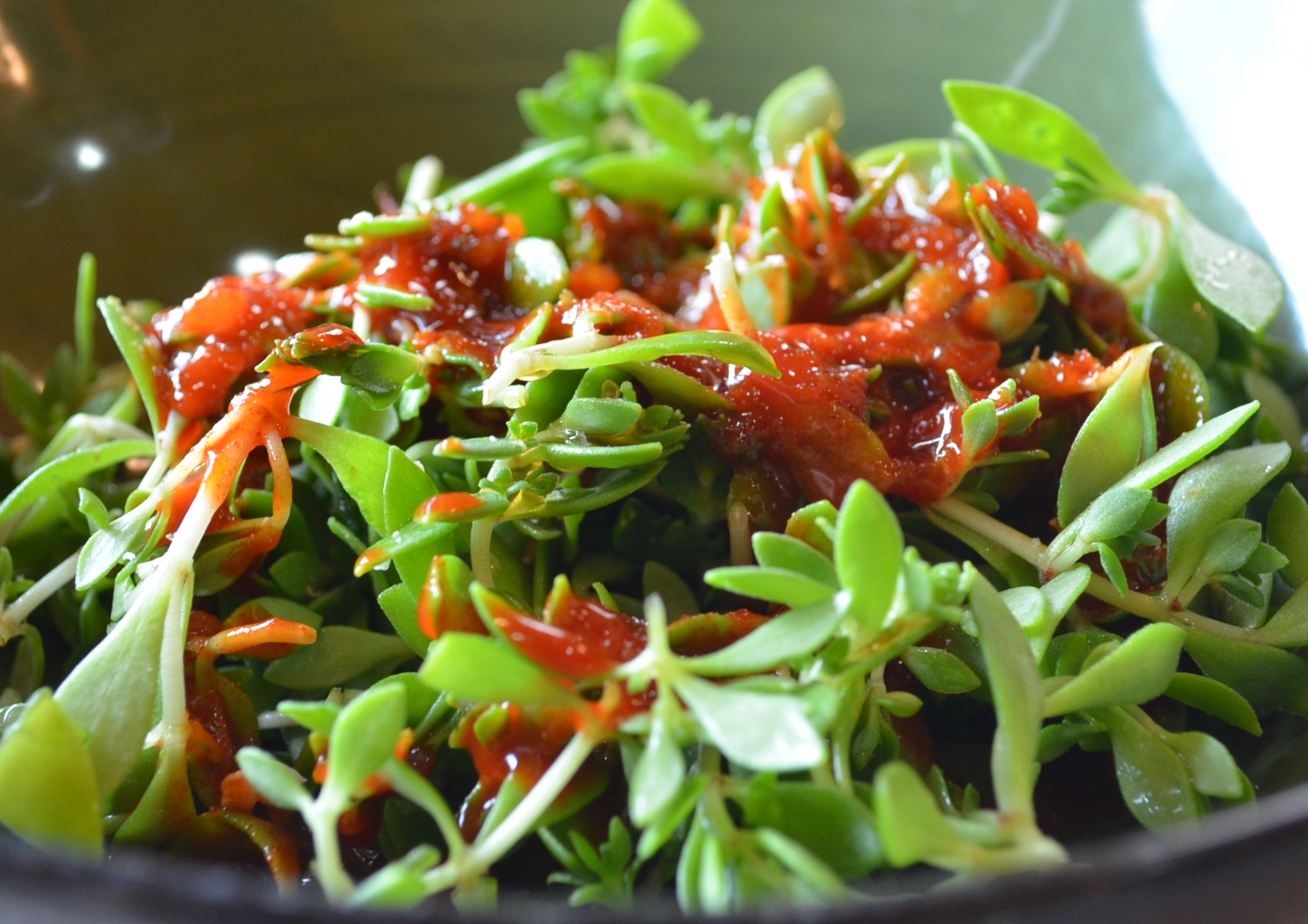
Then to fill in time until it was dark enough to see the fireflies, local performers hit the little stage by the shaded area. An eclectic mix of music, story-telling and documentary videos filled in the hour or two before dark. Everything from an electric-guitar playing youth with sunglasses, to 3 grannies in black playing their harmonicas. An ex-national radio broadcaster, now living in the valley for health reasons told a children’s story about a fat farting new wife. The pictures on the big screen were as descriptive as her narrative, so we didn’t need to understand Korean to get the gist of the story. Then finally it was dark enough for the 100 or so people to traipse up the valley past the fields of chillies, corn, perilla leaf, rice and cabbages to the right area.
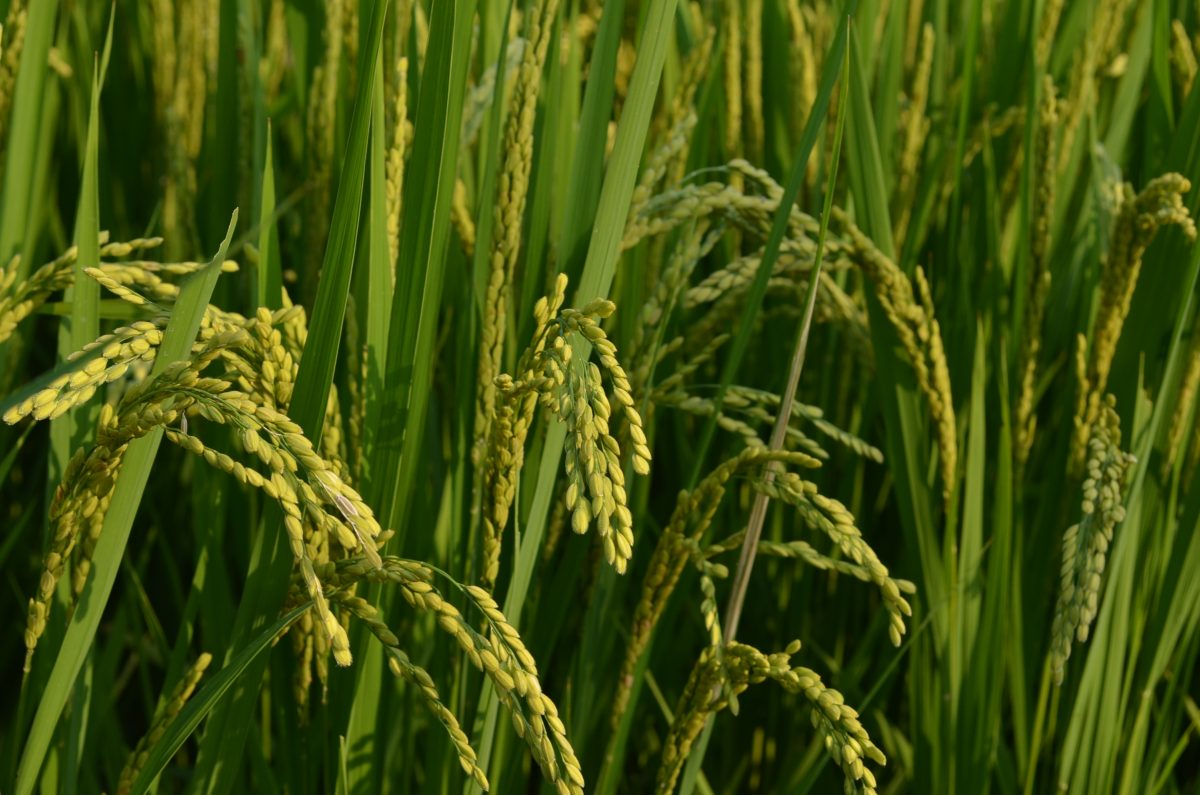
Men wearing what to us looked like fishing vests, waved red glowing batons to guide us all. Finally the fireflies emerged, darting over the field next to the track. It caused great excitement with both children and adults as they got their first glimpse of this natural phenomenon. The local men proudly explained the difference between the males and the females- the females not moving but sitting blinking their light to attract the males, who darted dangerously around to find them. Finally satisfied, or perhaps after the local men had decided that there had been enough noise from the city folk disturbing the locals, they guided us back to the activity field for the finale. The lighting of fire lanterns to send our wishes into the sky. After writing your wish on the flimsy paper, you inflate it by lighting what is basically a fire starter, and attaching that to the thin metal rod at the base of the lantern. This eventually fills the lantern with gas and up it floats, taking your wish to the heavens to be answered. . I am sure many of the locals were wishing for more Seoul families to come to next year’s event.


